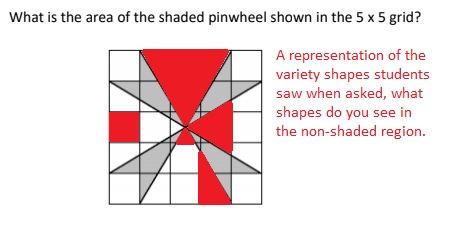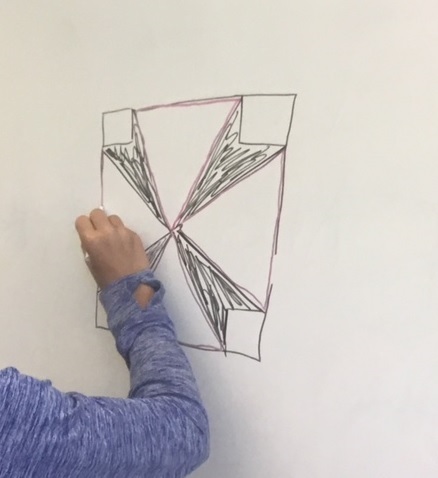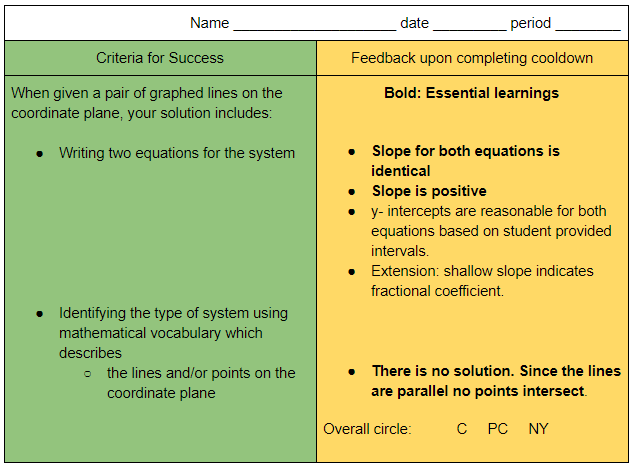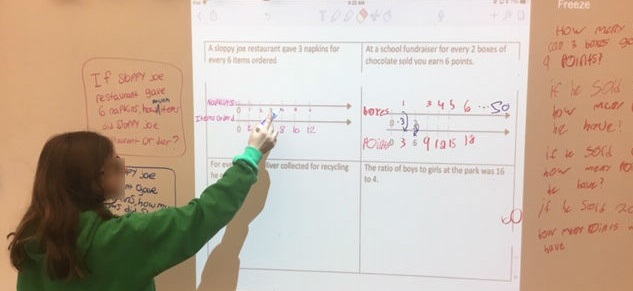While our middle school math summer success program has ended I wanted to share how the students grappled with James Tanton’s Pinwheel Area problem. I was only working with seven students that day because the rest of the class was on an EL field trip.
I gave each student a copy of the problem and 10 minutes of quiet think time before solving as a group.

After 7-8 minutes none of the students were able to get started so I asked, “What shapes do you see?” Their first response was the pinwheel and squares. Then I asked, “What other shapes to you see?” There as a very long pause. I sensed the students eyes were solely focused on the pinwheel and grid so I asked them to look at the entire image. Another long pause.
“Do you see any other shapes besides the pinwheel and squares?”
A few moments passed and a student responded, “I see triangles.”
I should have anticipated this task better. I was expecting to scaffold, but as we moved through the task, the students needed additional support.
“What triangles do you see?” My eyes naturally saw the larger triangles, but his eyes didn’t. I asked the student to point to the triangles.

At this point I recognized the grid was a distractor–which is great in terms of adding rigor to the problem while providing another scaffolding opportunity.
Let’s draw this on the board.

Now we were able to discuss a strategy. It took some time, but we agreed that if we were able to subtract the non-shaded area from the 5×5 grid, we would find the area of the pinwheel.

Students enjoy working on the whiteboard and wanted to shade the triangles.

Students recalled how to find the area of a square or rectangle, but could not remember how to find the area of a triangle. I drew a rectangle, and labeled the length and width as 3×2. “What’s the area?”
“Six.”
I cut the rectangle in half horizontally and asked, “What’s the area of one section?”
“Three.”
I erased the horizontal line and replaced it by cutting the rectangle in half vertically. “What’s the area of this section?”
“Three.”
I erased the vertical line and cut the rectangle in half diagonally. “What’s the area of this section?”
“Three.”
So if we multiply the base and height of a triangle and cut it in half (divide by 2) we can find the area. We revisited the printout of the problem to find the measurements and began calculating.

Now we were able to put it all together.

To achieve productive struggle this group required more scaffolding than I originally anticipated. I need to reread Five Practices.














 Our math department knew there should be something more, but we lacked the time and curriculum development expertise to write a coherent and cohesive scope and sequence. Following a structure and level of rigor based on our
Our math department knew there should be something more, but we lacked the time and curriculum development expertise to write a coherent and cohesive scope and sequence. Following a structure and level of rigor based on our 






